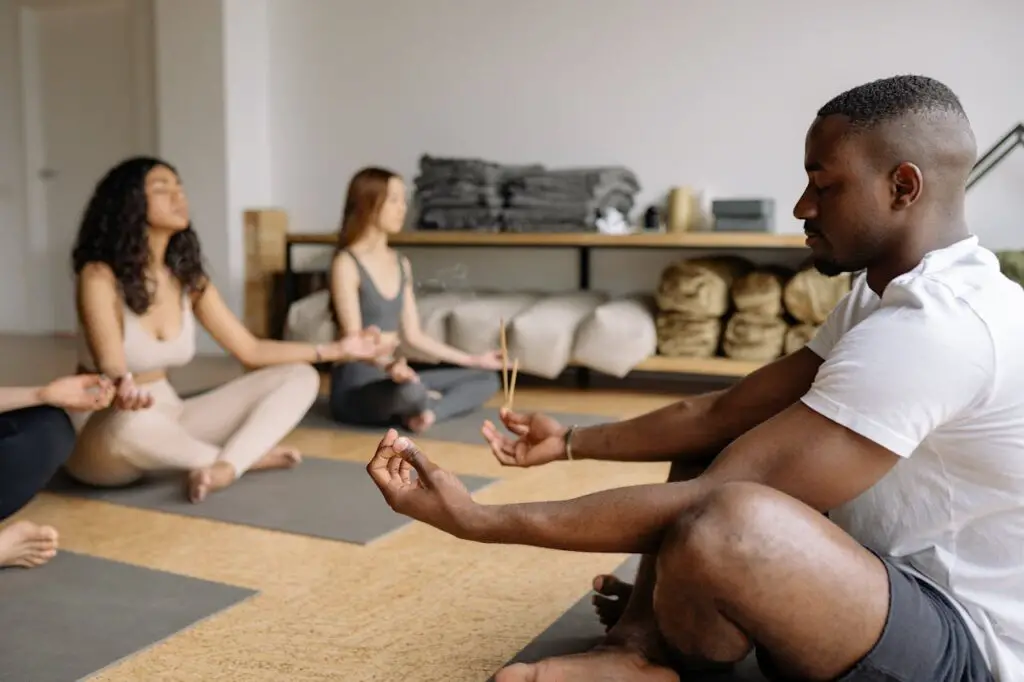From Stress to Zen: 10 Mental Health Practices Americans Swear By

Life in the United States can feel like a nonstop juggling act. Between work deadlines, family responsibilities, and the constant buzz of digital notifications, stress seems almost unavoidable. But what if managing stress didn’t have to feel like climbing a mountain every day? Across the country, millions of Americans have discovered practical mental health practices that don’t just alleviate stress—they create pockets of calm and joy in daily life. From simple breathing exercises to creative outlets, these approaches are tried, tested, and celebrated. Here are 10 mental health practices Americans swear by, complete with tips for making them part of your own routine.
1. Mindfulness Meditation: Finding Calm in the Chaos

Mindfulness meditation is all about paying attention to the present moment without judgment. This practice helps people observe their thoughts and feelings without getting swept away by them. Even just a few minutes a day can reduce stress, improve focus, and increase emotional resilience. Americans who practice mindfulness often notice that they can respond to stressful situations more calmly instead of reacting impulsively. Starting is simple—find a quiet spot, focus on your breathing, and gently bring your attention back whenever it wanders. It is a little like training your mind to be a supportive friend rather than a constant critic.
2. Yoga: Stretch Your Body, Soothe Your Mind

Yoga is much more than an exercise trend. By combining stretching, controlled breathing, and meditation, yoga nurtures both body and mind. Regular practice can reduce tension, boost mood, and improve sleep quality. Many Americans enjoy attending classes for the social connection, but even a 20-minute home session can make a noticeable difference. Poses like child’s pose or legs-up-the-wall are especially calming. Yoga teaches that flexibility isn’t just physical; it also applies to how we approach life’s ups and downs.
3. Journaling: Unlock Your Inner Thoughts

Journaling is an accessible and highly effective way to process emotions and gain clarity. Writing about your day, your worries, or your goals allows you to externalize thoughts that might otherwise stay tangled in your mind. Gratitude journaling, in particular, is popular among Americans seeking mental clarity and a more positive outlook. By taking a few minutes each day to jot down what you are thankful for, you train your brain to focus on the good and reduce negative self-talk. The best part is that there are no rules—your journal is your personal space to explore whatever is on your mind.
4. Deep Breathing Exercises: Calm Comes One Breath at a Time

Sometimes the simplest practices are the most effective. Deep breathing exercises help activate the body’s natural relaxation response. By focusing on slow, controlled breaths, you can reduce heart rate, lower blood pressure, and quiet racing thoughts. Techniques like diaphragmatic breathing or the 4-7-8 method are easy to learn and can be done anywhere, whether you are at your desk or waiting in line at the grocery store. Many Americans report that deep breathing is a go-to tool when anxiety starts creeping in, offering almost immediate relief.
5. Nature Walks: Healing Happens Outdoors

Spending time outdoors is a proven way to reduce stress and boost mental health. Nature walks allow you to unplug from the digital world and reconnect with the natural environment. Whether it’s a hike in the mountains, a stroll through a city park, or simply walking around your neighborhood, being outside lowers cortisol levels and improves mood. Many Americans find that a short daily walk can be just as rejuvenating as a full yoga session. Observing the sights, sounds, and smells of nature has a grounding effect that reminds us to slow down and breathe.
6. Digital Detox: Taking a Break from Screens

Our devices are wonderful tools, but constant notifications can increase stress and mental fatigue. A digital detox involves intentionally setting aside time away from screens to rest and recharge. This might mean turning off your phone for an hour, avoiding social media for a day, or setting boundaries on work emails after hours. Americans who regularly practice digital detox report feeling less anxious, more focused, and better connected to the people around them. The challenge is finding balance in a world that constantly demands our attention, but the reward is mental clarity and a refreshed mind.
7. Gratitude Practice: Cultivating Positivity Daily

Gratitude is a simple but powerful mental health practice. Taking a moment each day to notice and appreciate the positives in your life can shift your perspective away from stress and toward fulfillment. Whether it’s writing in a gratitude journal, sending thank-you notes, or simply reflecting on what went well during the day, this practice can strengthen resilience and improve overall mood. Americans who engage in gratitude exercises often find that it enhances relationships, fosters optimism, and makes challenges feel more manageable.
8. Therapy: Support from a Trusted Professional

Therapy is a safe and structured space to explore your thoughts and feelings with the guidance of a trained professional. Talking with a therapist helps individuals uncover patterns, develop coping strategies, and gain new perspectives. Whether you’re dealing with anxiety, depression, or simply navigating life’s transitions, therapy offers tailored support that can be life-changing. More Americans are recognizing therapy not as a last resort but as an essential part of self-care, proving that talking really does help.
9. Art Therapy: Creativity as a Stress Reliever

Art therapy encourages people to express emotions through creative outlets like painting, drawing, or sculpting. This approach provides a nonverbal way to process complex feelings and reduce stress. Engaging in art allows the mind to focus on creation rather than worry, offering a meditative escape. Many Americans find that experimenting with colors, textures, and forms is not only relaxing but also empowering. You don’t need to be a professional artist—art therapy is about exploration, self-expression, and the joy of making something uniquely yours.
10. Sleep Hygiene: Prioritizing Rest to Recharge

Quality sleep is crucial for mental and emotional well-being. Poor sleep can exacerbate stress, impair focus, and increase irritability. Practicing good sleep hygiene involves establishing a consistent bedtime, creating a calm sleep environment, and avoiding screens or heavy meals before bed. Many Americans who focus on improving their sleep notice significant improvements in mood, energy, and resilience. Treating sleep as a priority, rather than a luxury, is one of the simplest ways to support mental health.
Final Thoughts

Stress is an inevitable part of modern life, but it doesn’t have to control your well-being. The practices Americans swear by—mindfulness, yoga, journaling, deep breathing, nature walks, digital detoxes, gratitude, therapy, art therapy, and sleep hygiene—offer a range of ways to reclaim calm, clarity, and joy. The beauty of mental health practices is that there is no one-size-fits-all approach. Experiment, explore, and find the practices that resonate most with you. Even small, consistent steps can transform your daily life from frazzled to focused, overwhelmed to empowered, and stressed to genuinely Zen. Remember, investing in your mental health is not a luxury—it is essential for living a balanced, fulfilling, and resilient life.
Leave a Reply